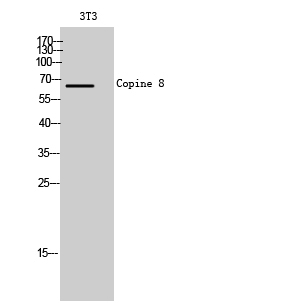Copine 8 Polyclonal Antibody
- 货号:YT1060
- 应用:WB;IHC;IF;ELISA
- 种属:Human;Mouse;Rat
- 免疫原:
- The antiserum was produced against synthesized peptide derived from human CPNE8. AA range:11-60
- 特异性:
- Copine 8 Polyclonal Antibody detects endogenous levels of Copine 8 protein.
- 组成:
- Liquid in PBS containing 50% glycerol, 0.5% BSA and 0.02% sodium azide.
- 来源:
- Polyclonal, Rabbit,IgG
- 稀释:
- WB 1:500 - 1:2000. IHC 1:100 - 1:300. ELISA: 1:40000.. IF 1:50-200
- 纯化工艺:
- The antibody was affinity-purified from rabbit antiserum by affinity-chromatography using epitope-specific immunogen.
- 储存:
- -15°C to -25°C/1 year(Do not lower than -25°C)
- 其他名称:
- CPNE8;Copine-8;Copine VIII
- 背景:
- copine 8(CPNE8) Homo sapiens Calcium-dependent membrane-binding proteins may regulate molecular events at the interface of the cell membrane and cytoplasm. This gene is one of several genes that encode a calcium-dependent protein containing two N-terminal type II C2 domains and an integrin A domain-like sequence in the C-terminus. [provided by RefSeq, Jul 2008],
- 功能:
- function:May function in membrane trafficking. Exhibits calcium-dependent phospholipid binding properties.,PTM:Phosphorylated upon DNA damage, probably by ATM or ATR.,similarity:Belongs to the copine family.,similarity:Contains 1 VWFA domain.,similarity:Contains 2 C2 domains.,
- 细胞定位:
- extracellular exosome,

- Western Blot analysis of 3T3 cells using Copine 8 Polyclonal Antibody

- Immunohistochemistry analysis of paraffin-embedded human lung carcinoma tissue, using CPNE8 Antibody. The picture on the right is blocked with the synthesized peptide.





